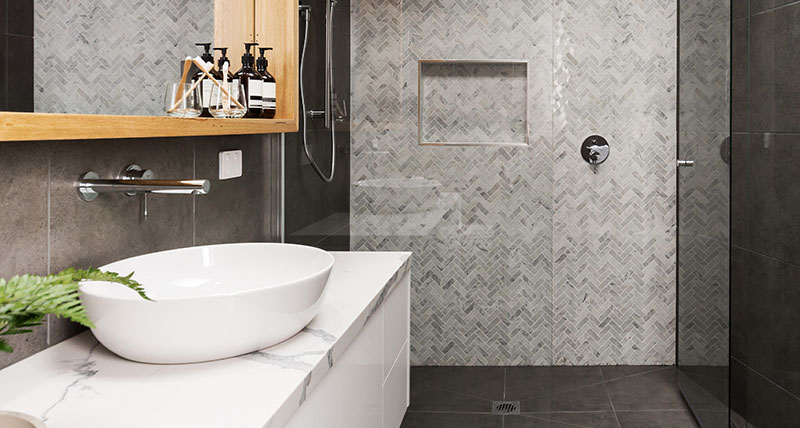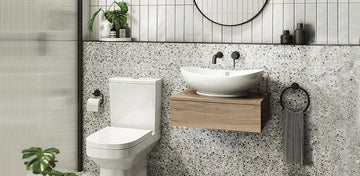In the ever-evolving world of bathroom fixtures, smart faucet technology is making waves. This innovative advancement is not only redefining the way we interact with water but also enhancing the efficiency and aesthetics of modern bathrooms. As the demand for smarter, more sustainable solutions continues to grow, it's crucial for industry professionals to stay informed about these cutting-edge technologies.
The integration of smart faucet technology into homes and commercial spaces is a testament to the growing emphasis on water conservation and user convenience. By incorporating features such as touchless operation, temperature control, and water usage monitoring, these faucets are setting new standards in the plumbing industry.

The Impact of Smart Faucet Technology on Water Conservation
One of the most significant benefits of smart faucets is their ability to conserve water. Traditional faucets often lead to water wastage due to manual operation and lack of precision. However, smart faucets address these issues by incorporating sensors and timers that regulate water flow, ensuring that water is used efficiently.
According to a study by the Environmental Protection Agency, the average household can save up to 700 gallons of water annually by switching to smart faucets. This makes smart faucet technology not only a sustainable choice but also a financially savvy investment. Furthermore, in commercial settings, the savings can be even more substantial, emphasizing the importance of adopting these technologies across various sectors.
Enhancing User Experience with Smart Faucets
Beyond water conservation, smart faucets offer a host of features designed to enhance the user experience. Touchless operation is particularly beneficial in public restrooms, reducing the spread of germs and providing a more hygienic environment. For homes, the ability to set and maintain specific water temperatures adds a layer of comfort and convenience that traditional faucets simply cannot match.
The integration of voice control and mobile app connectivity further elevates the functionality of smart faucets. Users can now control their faucets remotely, receive real-time updates on water usage, and even receive alerts for potential leaks or maintenance issues. This level of control and customization is a game-changer for both homeowners and facility managers.
Design and Aesthetics: A Modern Take
In addition to their practical benefits, smart faucets are also making a statement in terms of design. Sleek, minimalist designs are becoming increasingly popular, appealing to those who prioritize aesthetics in their home or business spaces. Many models are available in a range of finishes, from classic chrome to modern matte black, ensuring that there is a smart faucet to suit every style.
Furthermore, the incorporation of LED lights that change color based on water temperature not only adds a futuristic touch but also serves a practical purpose, preventing accidental burns from hot water.
Challenges and Considerations in Implementing Smart Faucets
While the benefits of smart faucet technology are clear, there are challenges to consider when implementing these systems. Initial installation costs can be higher compared to traditional faucets, and there may be a learning curve for users unfamiliar with the technology. However, the long-term savings and enhanced user experience often justify the initial investment.
It is also essential for industry professionals to stay updated on the latest advancements in smart faucet technology to provide clients with the best solutions. Regular maintenance and updates are crucial to ensure the faucets continue to operate efficiently and effectively.
For further insights into water conservation and bathroom technology, you can explore our article on reducing water waste in bathrooms.
The Future of Smart Faucets in the Industry
As technology continues to advance, the future of smart faucets looks promising. The integration of artificial intelligence and machine learning could lead to even more sophisticated features, such as predictive maintenance and personalized user settings.
Moreover, as sustainability becomes an increasingly important consideration for consumers and businesses alike, the demand for water-saving technologies will continue to rise. Smart faucet technology is poised to play a pivotal role in meeting these demands, paving the way for a more efficient and environmentally conscious future.
For a deeper dive into eco-friendly bathroom designs, consider visiting this comprehensive guide.
FAQ
What are the main benefits of smart faucet technology?
Smart faucet technology offers several benefits, including water conservation, enhanced user experience through features like touchless operation and temperature control, and improved hygiene in public spaces.
Are smart faucets more expensive to install?
While the initial installation costs of smart faucets can be higher than traditional faucets, the long-term savings on water bills and the added convenience often outweigh the initial investment.
How do smart faucets contribute to water conservation?
Smart faucets use sensors and timers to regulate water flow, reducing wastage and ensuring efficient use of water. This can lead to significant water savings in both residential and commercial settings.

Conclusion
In conclusion, smart faucet technology is transforming the way we interact with water in our homes and businesses. By offering a blend of efficiency, convenience, and style, these faucets are setting new standards in the plumbing industry. As the demand for sustainable solutions continues to grow, embracing smart faucet technology is a step towards a more efficient and environmentally friendly future.






